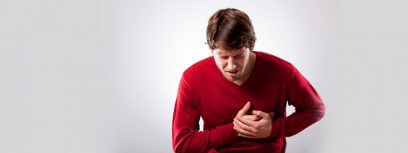How does Rehabilitation help Stroke Patients?
The aftermath of a stroke isn’t limited to just the visible signs displayed by the affected patient who apart from needing the obvious physical help also requires a constant supply of support, special care, and attention.
UNDERSTANDING A STROKE
A stroke is a neurological incident that occurs when there is a lack of supply of oxygen to a part of the brain. This results in the death of the cells in that area. This is exactly what happens during a stroke incident:-
The patients who are prolonged hypertensives without sufficient control over their blood pressure, cholesterol and blood sugar levels are all equally vulnerable to suffering from a stroke incident.
A stroke happens when there is a lack of supply of blood to the brain and consequently lack of oxygen supply to the area. When there is an insufficient supply of blood to the brain, that part suffers from cell death which puts a pause to the functioning of that area of the brain. When this happens, the duty of that part is lost and the impulses sent from this area of the brain towards the limbs and parts that carry out the action are not transmitted to the parts.
Another way that a stroke may occur is by bleeding that occurs in the specific area of the brain which is known as a haemorrhagic accident. Once cerebral haemorrhage occurs, lack of oxygen supply occurs to that area of the brain and the same effect of loss of blood is experienced.
Now when the connection between the brain and the muscles is lost, the action of the muscles is lost. For a limb to move, the muscles need to contract and relax accordingly and this can only be done when the brain commands them to do so. The connection between the brain and the muscles is a two-way street. For example, when the muscle is in a contracted state, impulses go to the brain and the brain responds by commanding the muscles to relax. Locomotion and most other major movements require the constant coordination between the muscles and the brain since they depend entirely on the contraction and relaxation. This is lost when a patient suffers from a stroke and hence he or she enters a state of paralysis usually limited to one side of the body (the opposite side of the brain is affected).
UNDERSTANDING THE ROLE OF REHABILITATION FOR RECOVERY OF STROKE PATIENTS
What is Stroke Rehabilitation?
As the best rehabilitation centre in India, SuVitas understands the need for proper stroke rehabilitation and the patients admitted under the stroke rehabilitation programs are given a holistic therapy that aims to bring them back to as normal a life as they used to lead before the tragic occurrence.
The Mechanism Behind Stroke Rehabilitation
As we have understood earlier, the occurrence of a stroke leads to a loss in the connection between the brain and the limbs- stroke rehabilitation in simple words attempts to slowly but surely reestablish this connection. During the stroke rehabilitation, the limbs are moved with assistance and support such that slowly they start sending impulses to the brain again. This connection is strengthened over time, the stroke patients slowly gain control over the movement of their limbs.
With constant and rigorous effort, aided by top physiotherapists, doctors and nurses the patients slowly regain muscle control and slowly perform actions with limited to no assistance over a reasonable period of time. Some patients require assistance to start talking and swallowing again since the muscles that are present in the throat and control these actions are compromised as well. Speech and swallow therapy conducted by professional speech therapists help in the strengthening of the throat muscles and thereby help the patient recover on these aspects as well.
Stroke rehabilitation is not however limited to just the physical recovery of the patient. It includes the wholesome recovery of the patient in a manner that leaves them physically and mentally fit heading towards a better lifestyle in general. When a person undergoes the recovery process from a stroke they require more than just assistance to move. They need to know that there are people out there to understand what they are going through so that they can remain strong mentally and deal with the situation. Many a times there is a high chance that the patient can go into depression and have a hard time coming out of it. Hence psychological therapy plays a huge role in the overall recovery of the patient. This may involve one-to-one counselling, group therapy, and support sessions. The families of the patients are also advised on how best to look after the patient once he or she has been discharged from the centre. There are nutritionists who play a major role in curating a diet plan that helps the patient recover soon enough by having the essential strength from within to do so.
Through a combined program that leaves the patient in a better state physically and mentally than earlier, the stroke rehabilitation helps the patient and is thus a necessity to ensure that the patient’s future life doesn’t have to be primarily affected by the stroke incident.

